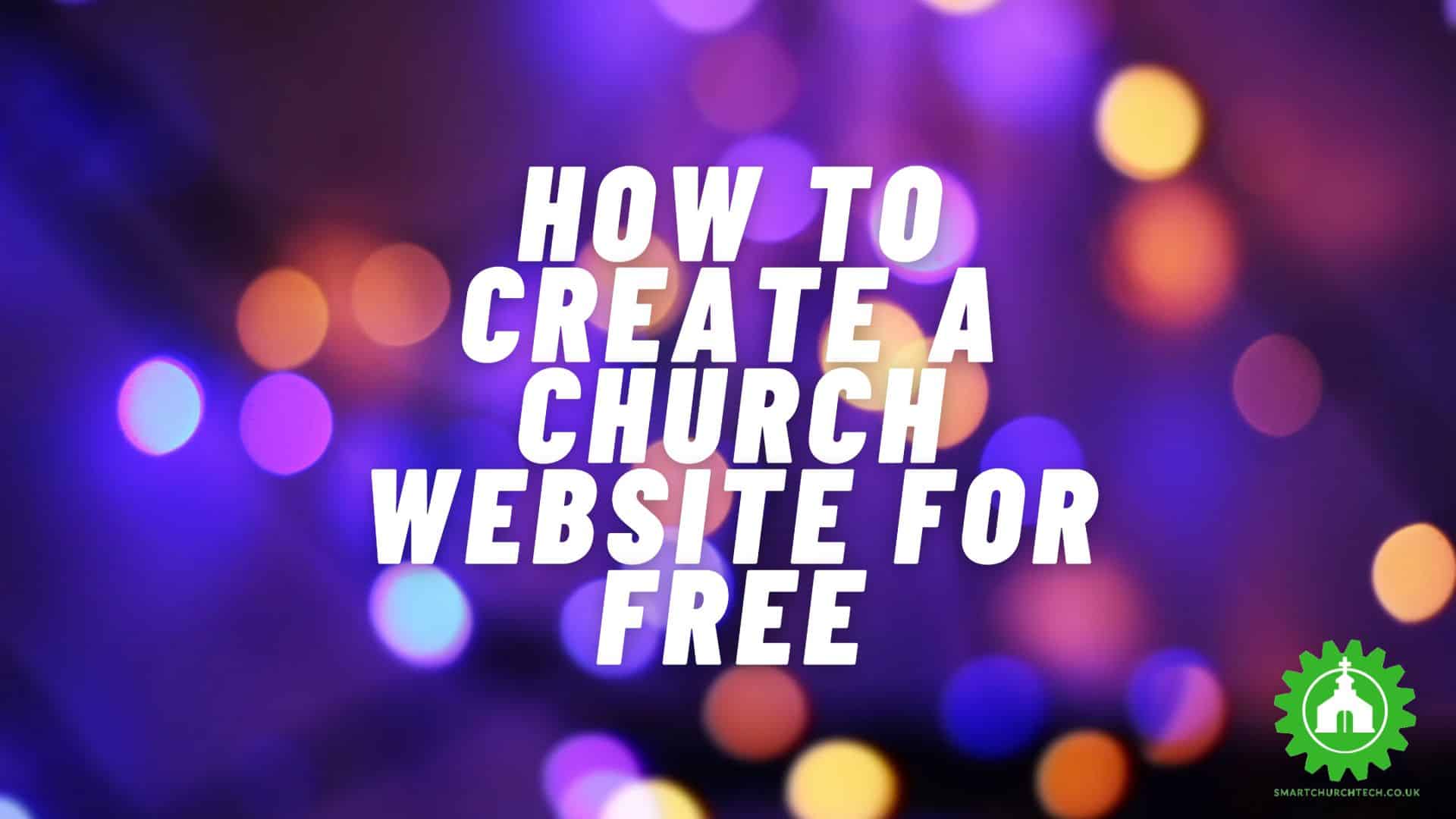As The Beatles once sang, “the best things in life are free” – and while this is true of the wonderful natural world around us and the sights and sounds of God’s creation, it isn’t necessarily true of things like websites.
As with all things, there are pros and cons to building a church website for free. When you pay nothing, you can’t expect great flexibility. You’ll get something rudimentary and functional, but there might be a better way of getting it done.
Of course, if you’re on a budget of zero, then simply getting an online presence is the important part. Whatever you choose to do, you can always upgrade and improve later on.
Creating a website for free can be done by following the steps shown below, and at each stage we’ll identify any pros or cons to be aware of.
Determine your website’s purpose
Decide what kind of website you want to create and what you want it to achieve. This could be a church blog, an online store, or a website with multiple features.
The simplest option is to create a business-card-style site that gives some basic info about the church, including the location and service times. If you choose to add a blog, you can include sermon notes and many other pieces of information.
There are no pros and cons here – this is simply a matter of setting your initial goal.
Choose a website builder
If you want to get on the technical side of web development, you’ll need hosting (a space to store your files). However, this usually comes at a cost, and there are many website builders available that allow you to create a website for free. Some popular options include WordPress.com, Wix, and Weebly. Research each option to determine which one is best for your needs.
Free options include Melos.Church, which you can read more about at the link above.
Pros: Website builders are easy to use with familiar point and click/drag and drop interfaces. You need limited technical knowledge.
Cons: There may be limited design options, and load times might be slower than a fully optimized custom site.
Choose a domain name
Your domain name is the web address that people will use to access your website. Choose a name that is memorable and reflects the purpose of your website – we have a whole article about this here.
You can use a free domain name provided by the website builder or purchase a custom domain name for a small fee.
Pros of free domain names: They are free
Cons of free domain names: The free name is often a subdomain, so instead of being YourChurch.com you might get YourChurch.wix.com or weebly.com/YourChurch. This can make it harder for people to find your site and gives you limited control over branding.
Pros of custom domain names: Full control of branding, looks professional, you can choose exactly what you want.
Cons of custom domain names: Not free. You might also be tied in to a year-long contract with a monthly fee – check carefully before signing up to anything.
Choose a website template
Most website builders offer a variety of templates to choose from. Select a template that fits your website’s purpose and customize it to your liking.
Pros: It’s easy to choose a design and change it as you wish
Cons: Free templates can be “samey” and won’t offer as many options or functions as paid-for alternatives
Create and add content
Add pages and create content for your website. This could include text, images, videos, or other media. Make sure your content is high-quality and relevant to your website’s purpose.
You can often find free media built-in to website builders, or you can find images or create graphics on sites like Pixabay and Canva.
Pros: Free stuff!
Cons: You’ll have to write your own text.
Optimize for search engines
Use search engine optimization (SEO) techniques to help your website rank higher in search engine results. This could include optimizing your content for keywords, adding meta descriptions, and building backlinks.
Pros: SEO for free websites is limited, so there’s not too much to do
Cons: You won’t get the full benefit of high search engine rankings as you can’t make adjustments to boost your position.
Publish your website
Once you’ve created and customized your website, it’s time to publish it. Make sure to test your website thoroughly to ensure it’s working properly.
Pros: A free website is a free website. Congratulations, you now have an online presence!
Cons: It might not be as polished, responsive, or easy to find as an option you’ve paid for. But you still got a site online!
Creating a website for free can be a great way to get your online presence started. Remember to keep your website updated with fresh content and to promote it through social media and other channels.
In the modern era, social media is often the go-to source for information, while your website is a backup resource. That’s why you can get away with choosing the free option, but remember – always aim for excellence in what you do. If you can afford something better, go for it. If not, do the best you can with the tools you have available.

